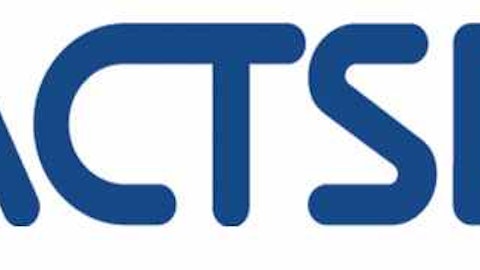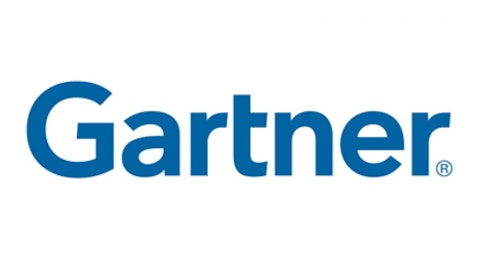Wide-moat companies often trade at relatively high valuations due to their predictability and ability to ride out downturns in the economy relatively unharmed. Companies like The Coca-Cola Company (NYSE:KO) almost never trade at really attractive valuations, where attractive means a likely annual return of at least 10%. Instead, wide-moat companies tend to trade at about 5% owner earnings yields.
If wide-moat stocks deserve to trade at 5% owner earnings yields — the same as 20 times owner earnings — then companies that do not have wide moats should trade at a lower valuation. However, that is not always the case.
A vanishing moat is not a wide moat
Take, for instance, IHS Inc. (NYSE:IHS). IHS provides data and analytics to customers in the energy, chemicals, transportation, and electronics industries. The company has traditionally enjoyed significant pricing power due to its vast collection of data on the industries it serves — think Dun & Bradstreet Corp (NYSE:DNB) with more specificity.
No single company has the ability to match IHS’s breadth of data across these industries; the inability to replicate its offering has historically enabled the company to earn high returns on invested capital due to its pricing power. However, IHS’s return on invested capital has fallen dramatically in recent years.

The drop off is symptomatic of the necessity to devote a larger portion of cash flow toward maintaining the company’s competitive position in the marketplace. IHS is still the only company that can offer in-depth analytics to all of the industries it serves, but it faces stiff competition from companies that specialize in only one or two industries.
Companies like Gartner Inc (NYSE:IT), the world’s largest IT research company, competes with IHS on supply chain analytics. The company maintains a level of revenue that is similar to that of IHS, but it devotes a greater percentage of its focus to supply chain than does IHS.
In addition to carving out a narrow niche, Gartner Inc (NYSE:IT) derives significant pricing power from the relatively low cost of its product compared to the total size of its customers’ budgets; this enables the company to earn astronomical returns on invested capital. These are the kinds of companies that IHS has to compete with in each of its markets.
However, IHS also competes with more generalized data sources like Thomson Reuters Corporation (USA) (NYSE:TRI). Thomson Reuters’ data offering rivals the breadth of IHS and Dun & Bradstreet Corp (NYSE:DNB). Like IHS, Thomson Reuters has significant operating leverage due to its reliance on data, so margins can easily expand with sales growth. Also like IHS, Thomson Reuters derives the vast majority of its revenues from subscriptions — a recurring revenue source.
Thomson Reuters Corporation (USA) (NYSE:TRI) is focused on financial market data, which is not a core focus of IHS. But it is an important comparable because, although it has a tremendous breadth of proprietary data, it earns mid-single-digit returns on invested capital — not unlike IHS’s ROIC over the last two years. This is a sign that shareholders can count on lower ROIC in the future than what IHS had traditionally earned in the past.
Bottom line
IHS is not a wide-moat company anymore, so it should not trade like one. The high end of management guidance for 2013 is $4.43 earnings per share. Let’s round that up to $4.50. The stock currently trades in the mid-$90s per share, which is the same as roughly a 4.7% earnings yield.
In a low interest-rate environment, it is understandable why someone would require only a 4.7% yield on a wide-moat stock. But IHS is not a wide-moat stock anymore — it should trade much lower.
The article Avoid This Vanishing Moat originally appeared on Fool.com.
Copyright © 1995 – 2013 The Motley Fool, LLC. All rights reserved. The Motley Fool has a disclosure policy.



